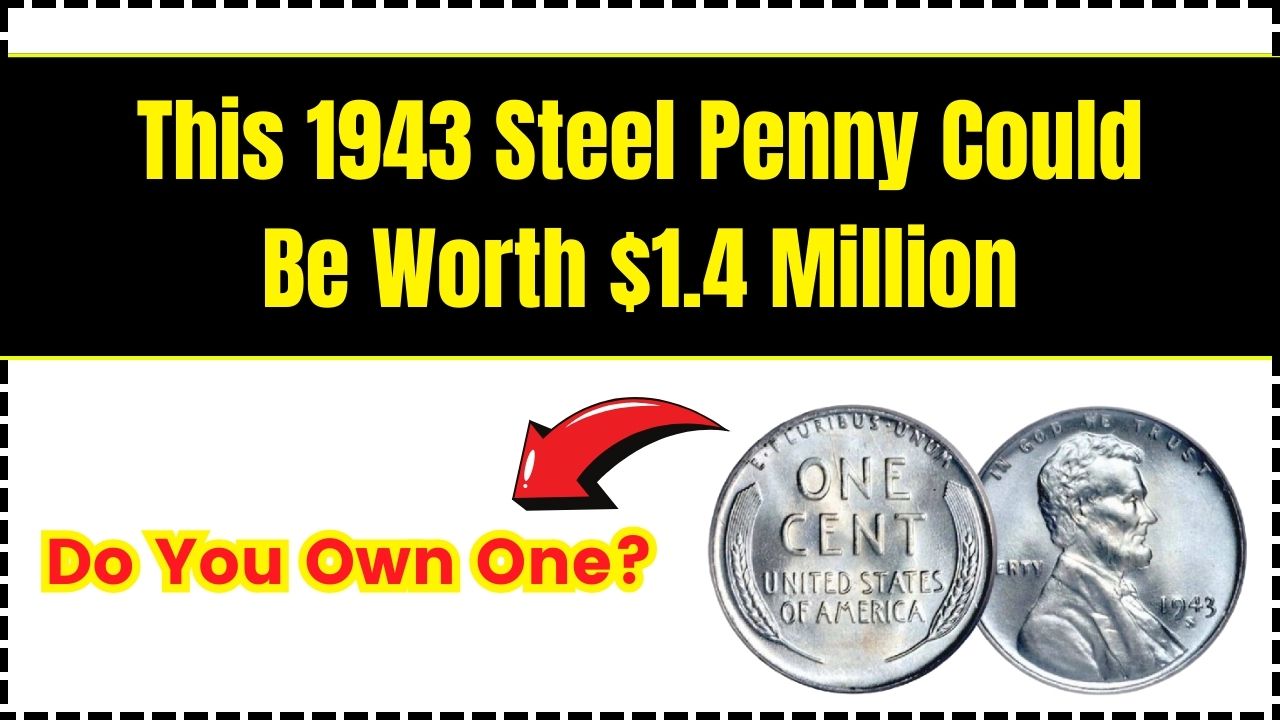Most pennies are overlooked as mere pocket change. But what if that dull coin in your drawer or piggy bank turned out to be worth over a million dollars? That’s the fascinating possibility behind the 1943 steel penny—particularly, its ultra-rare copper counterpart. Whether you’re a casual coin holder or a seasoned collector, understanding the story behind this coin could quite literally pay off.
In this comprehensive guide, we’ll walk you through everything you need to know about the 1943 steel penny: its historical background, why it’s important, how to identify the valuable copper version, and what to do if you think you’ve found one.
Why Was the 1943 Penny Made of Steel?
During World War II, the U.S. government needed massive amounts of copper for military equipment like shell casings and radio wiring. To conserve resources, the U.S. Mint switched from copper to zinc-coated steel for penny production in 1943.
The result? Over 1 billion 1943 steel pennies were minted across facilities in Philadelphia, Denver, and San Francisco. These coins had a distinctive silver-gray look and were magnetic due to their steel composition—unlike the usual copper pennies Americans were used to.
The Rare Copper 1943 Penny: A Million-Dollar Mistake
While nearly all 1943 pennies were made from steel, a small number were mistakenly struck using leftover copper planchets from previous years. These errors are exceedingly rare—fewer than 20 are confirmed to exist—and they’ve become the holy grail of coin collecting.
The most famous of these rare coins sold for $1.4 million at auction. Their immense value lies in:
-
Their historical context as a minting error
-
The limited number in circulation
-
Their high demand among collectors
How to Identify a Valuable 1943 Penny
Think you’ve found a rare copper penny? Here’s how to tell the difference:
1. Magnet Test
-
Steel pennies are magnetic.
-
Copper pennies are not.
Place your 1943 penny next to a strong magnet. If it sticks, it’s steel and likely not rare. If it doesn’t, you may have something valuable.
2. Weigh the Coin
-
Steel penny: 2.7 grams
-
Copper penny: 3.11 grams
Use a digital gram scale for accurate measurement.
3. Check the Color
-
Steel pennies: Grayish silver.
-
Copper pennies: Reddish-brown hue.
Visual inspection can often hint at the coin’s composition, though time and wear may alter appearances.
4. Examine the Mint Mark
-
No mark = Philadelphia
-
D = Denver
-
S = San Francisco
While the mint mark doesn’t determine whether the penny is steel or copper, it does contribute to identifying specific varieties and adds to a coin’s historical profile.
How Much Are 1943 Pennies Worth?
| Type of Penny | Approximate Value |
|---|---|
| Regular 1943 Steel Penny | $0.01 – $0.50 |
| Steel Penny in Mint Condition | $1 – $10 |
| 1943 Copper Penny | $100,000 – $1.4 million |
Keep in mind: Value is influenced by condition, rarity, and authenticity. Even steel pennies in pristine condition can fetch more than face value among collectors.
What to Do If You Think You Have a Rare Penny
✅ 1. Get It Appraised
Contact a professional numismatist or coin dealer who can evaluate the coin in person. Reputable professionals can be found via the American Numismatic Association (ANA).
✅ 2. Submit for Grading
Services like PCGS (Professional Coin Grading Service) and NGC (Numismatic Guaranty Corporation) offer official certification, grading, and encapsulation. Graded coins often command higher prices at auction.
✅ 3. Avoid Cleaning the Coin
Never attempt to clean or polish the coin. Cleaning can reduce its value significantly. Let professionals handle it.
✅ 4. Sell It Through the Right Channel
Rare 1943 copper pennies should be sold through:
-
Top auction houses (e.g., Heritage Auctions, Stack’s Bowers)
-
Online coin marketplaces (if certified and graded)
-
Private collectors or investment firms
Coin Collecting as an Investment
Many investors are turning to numismatics (the study and collection of coins) for portfolio diversification. Rare coins like the 1943 copper penny offer:
-
Hedge against inflation
-
Tangible assets
-
Historical significance
-
Potential for high ROI
If you’re starting out, focus on:
-
Learning grading standards
-
Tracking market trends
-
Buying authenticated coins
Fast Facts About the 1943 Penny
| Key Point | Details |
|---|---|
| Year | 1943 |
| Common Composition | Zinc-coated steel |
| Rare Variant | Copper |
| Magnetic? | Steel = Yes, Copper = No |
| Weight | Steel = 2.7g, Copper = 3.11g |
| Record Auction Sale | $1.4 million |
| Authentication Services | PCGS, NGC |
| Official Source | U.S. Mint |
This Penny Could Change Your Life
The 1943 steel penny is more than just a piece of history—it’s a reminder that even the most ordinary items can hold extraordinary value. If you happen to find a reddish 1943 penny that doesn’t stick to a magnet and weighs slightly more than usual, don’t dismiss it as pocket change. You could be holding a million-dollar minting mistake.
Whether you’re a curious individual checking your change or a seasoned collector, staying informed about these hidden treasures is the first step to making a potential fortune.
FAQs
Q: Are all 1943 pennies steel?
No. While most are steel, a rare few were mistakenly made of copper.
Q: Is a 1943 steel penny valuable?
Not typically—unless in excellent condition. Rare copper variants are the valuable ones.
Q: How do I sell a rare penny?
Get it authenticated and graded, then sell through trusted auctions or collectors.
Q: Can a fake 1943 copper penny exist?
Yes. Some forgeries are out there. Always use trusted authentication services.









